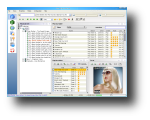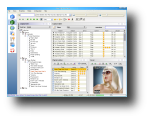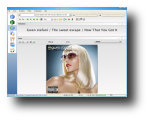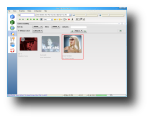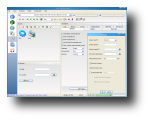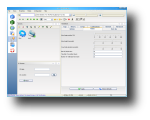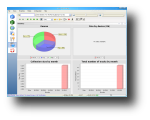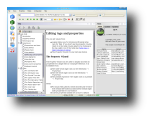Have you ever wanted to organize your music collection and listen to the songs in it at the same time? Jajuk allows you to easily organize your collection, regardless of whether it's a small, large, scattered or arranged one. It was firstly designed for advanced users looking for powerful functionalities, but it keeps at the same time a fast and intuitive interface which shouldn't cause any hard time to inexperienced users as well. Moreover, because it's written in Java, it provides maximum portability and desktop integration, regardless of the current operating system one would use.
Jajuk can be installed either from a jar installation file, from an rpm file or from a jnlp webstart application. More advanced users can get the sources package, rebuild it and finally install it. Unfortunately, from what I've noticed, Jajuk isn't (yet) available on Fedora's repositories and possibly for other popular distributions as well but I can't say for sure as Fedora was the only available testing distribution for me at this time.
In order to install Jajuk, I've downloaded the jar installer and ran the command java -jar jajuk-java-installer-version. On a second Fedora system, I've tried installing Jajuk using the provided rpm file. I've downloaded it and installed it with the command rpm -ihv jajuk-version.noarch.rpm. Both were a complete success. A Jajuk shortcut was placed into the KMenu, under Multimedia.
The first time I've started Jajuk, I had to select the music location. All my music files reside under a single directory so selecting the location took a very short while. After completing this step, I was presented with the usual "Tip of the day" (which I find very annoying and immediately unset the "show at start-up" option because I like to see each feature in action rather than reading about it. It can, however, be a good place to start for inexperienced users.). Closing this window finally allowed me to interact with the application's interface.
At a first look, its interface seemed rather easy to use and, because I've selected the music directory earlier, I was now able to browse through and listen to any of the songs from my collection. At a closer look, I've noticed that the interface was divided into four important sections: in the left were the perspective buttons, the upper section contained various functions that enable the user to control how the collection is being played, the lower section displayed track name, selection size, progress bar and other various information. The main section is also divided into a few sections, depending on the current perspective.
The first perspective, Physical, will show your collection as it's on the disk, sorted by files, directories, playlist files etc, while the Logical perspective will show your collection by following the id3 tags, sorting it by genres, artists, albums and so on. The Player perspective will show various information about the current playing tracks, as well as the album's cover. The Configuration perspective allows you to set various configuration options, as well as any new devices or directories containing audio files. The Statistics perspective will show graphs regarding genres, collection size and number of tracks, while the last perspective, Help, will show a complete documentation system, sorted by titles.
When the current perspective is set to Physical, the main screen will be divided into four sections. To the left, you'll see a physical tree that shows the collection items sorted by their directories, while to the right, all items will be listed in the Physical table, regardless of the directory, genre or artist. There's also a filter that allows you to show only a certain artist, title, size or many others. In the lower left part, you'll see a playlist editor that I think shows some kind of history of played items, as well as a rate meter showed in yellow stars. Finally, in the right lower section, you'll see a cover for the album the current song is part of. This function is a little weird, as it searches the web for images containing the artist or album name. Even if you set the filter to "High", Jajuk will surprise you with images that don't have anything to do with the album, artist or music in general for that matter. To give you an example, I was listening to a Gwen Stefani song and the cover function showed me a picture with some groceries. Pretty neat, huh? Unfortunately, I couldn't find an obvious option that will allow me to manually choose a picture from the hard drive as the current album's cover, but I've later noticed that Jajuk will automatically set the image in the album's directory as the cover image. So if you'll see pictures that have nothing to do with the album you're listening to, search the web for a suitable cover image and save it in the album's directory. Of course, strange images show for less popular albums or for albums with very common names.
As for the music player integrated into this application, it's highly recommended that you install MPlayer before installing Jajuk. This way, you will be able to make use of all its advanced features which will most definitely offer a pleasurable experience. Jajuk also offers some advanced features for playing the songs in your collection. For instance, you'll be able to choose a genre and listen only to the newest items added to the collection that are part of the selected genre. Moreover, you can set Jajuk to play only the most popular items or simply set it to play random files from a certain genre. The basic functions are also present, such as repeat mode, shuffle mode, continuous mode or intro mode, which will play only a part of the current song.
Another interesting feature I've noticed in Jajuk is the Digital DJ. This feature acts like a real DJ: it generates music playlists according to your set of rules and attributes. You can configure several options for a DJ: its name, the rating level of the tracks it's going to play, the cross-fade duration and whether a track can be played several times in a party. Moreover, you can define several ambiences so the generated playlists will be filtered using your settings. An ambience can consist of one or more genres. Unfortunately, for this function to work properly, all your music files must be tagged correctly.
The application's interface also supports skinning so If you don't like the default look'n'feel, you can easily change it from the Options tab in the Configuration Perspective. In the same perspective, you can customize several advanced options such as the intro mode playing and crossfade duration, how the player should behave on each startup, as well as a few file patterns used for organizer and animation and several network options.
The Good
To be honest, I was pretty impressed by this application. The first reason was that it's among the few applications of its kind and the second reason was the large number of features that allowed me to quickly arrange my music collection by genre, artist or the directory they were part of. Moreover, if you don't know what a feature does, you'll most certainly find it in the Help perspective.
The Bad
I don't know if there's anything bad about this application. Apart from the fact that I couldn't manually set a cover for an album (rather unimportant, considering that I finally succeeded), there's nothing bad about this program. It's possible to be missing some less popular features one would find useful but that's it. For what is worth, I couldn't think of a feature I would use that Jajuk doesn't already have.
The Truth
If you're a music lover but unfortunately have a pretty large and scattered collection, you're using Linux and moreover, you're looking for a powerful, full-featured music player, then Jajuk is the most suitable application for you. You should definitely give it a try, even if you don't have a music collection at all. I'm sure you'll be impressed by it as much as I was and you'll create a music collection in no time, just to make use of all its features.
Check out some screenshots below:
 14 DAY TRIAL //
14 DAY TRIAL // 